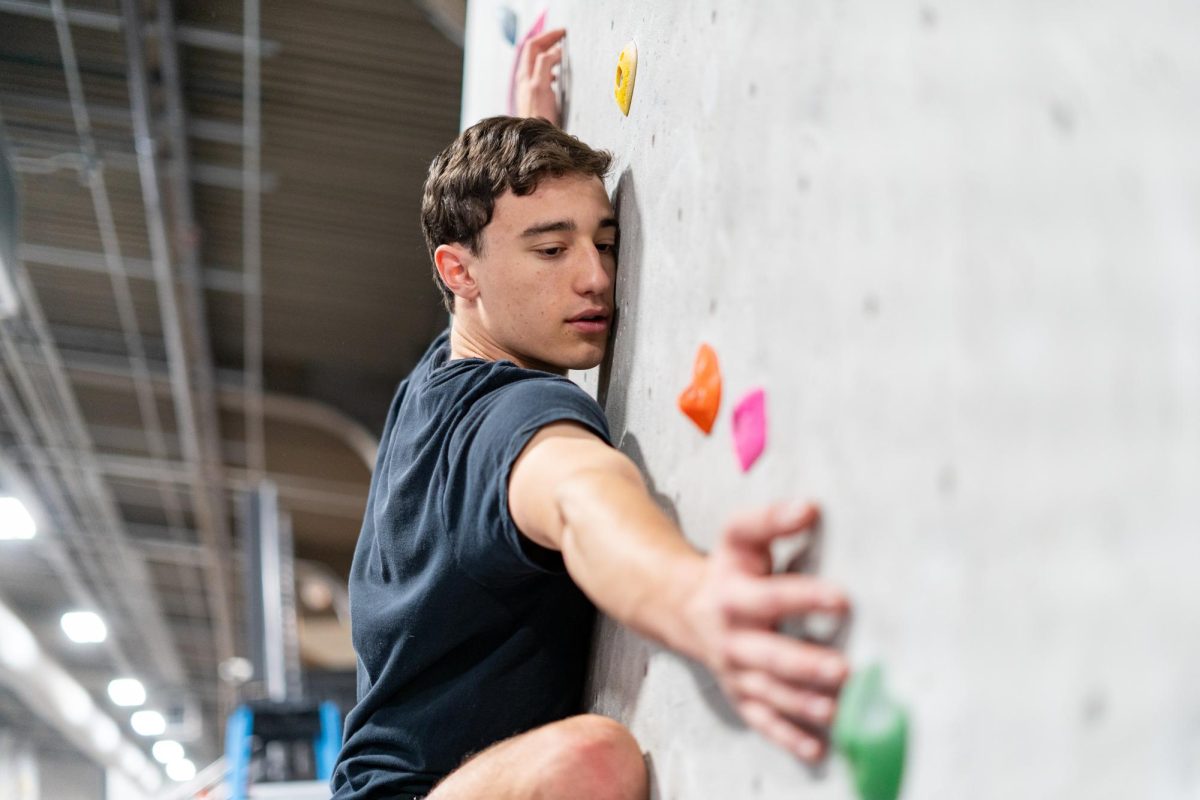Cathedral hosts ghosts
October 31, 2008
All was quiet. Outside the yellow- and pink-tinted windows, students and cars drifted like… All was quiet. Outside the yellow- and pink-tinted windows, students and cars drifted like shadows across Bigelow Boulevard four stories below. We waited. ‘Let’s sit very still for a minute. Count to 60. And close your eyes. Let’s see what would happen,’ said E. Maxine Bruhns, the director of Pitt’s Nationality Rooms program. We were in the hidden second floor of the Early American Nationality Room, a stark recreation of a 17th-century bedroom, and we waited for the spirit of Bruhns’ grandmother to appear. ‘Look! The rope is moving,’ whispered Bruhns. The rope wasn’t moving, but Bruhns, who has directed the Nationality Rooms for 43 years, said strange things have happened in the room in the past. Objects have fallen to the floor. Candle flames have flickered in the air, despite very little foot traffic in the room and even less airflow. ‘Sometimes students feel a chill ‘mdash; when a ghost comes by, there’s a chill in the air,’ she said. About eight years ago, Bruhns said, a tour group visiting the room mysteriously smelled bread baking. She said it couldn’t have come from anywhere but the fireplace’s stove on the first floor. Another time, Bruhns said a tour guide brought a group into the room, and the baby’s crib had been rocking on its own. After tour guides told these stories, a University custodian named John Carter told Bruhns that he, too, had a spooky experience. One day when he was tidying the upstairs of the room, he heard a woosh and spun around, startled. The quilt on the bed had been turned down, and the mattress had an imprint on it that resembled the shape of a person. That person, Bruhns said, must have been the spirit of her grandmother, Martha Jane Poe, a West Virginian who died in the 1930s and whom Bruhns mused was related to the master of the macabre, Edgar Allen Poe. Martha Poe’s belongings now rest in the Early American room: a framed photo of her as a young woman under a splintered pane of glass, a quilt she and Bruhns’ mother had hand-stitched, a small, fragile Bible that belonged to her husband and Bruhns’ own embroidered baby blanket and pillow. Bruhns said she believes that these items, particularly the quilt, conjure the woman’s spirit. ‘I’m very attached to her,’ said Bruhns. ‘I feel at home and perfectly relaxed in this room.’ Not everyone feels relaxed, though. Two custodians, Ruth Mullen and Floyd Clawson, who clean the upstairs room occasionally, said they recently encountered the ghost. ‘You open the bottom door, and it looked like a shadow darted out of the room,’ said Clawson, motioning toward the wall where he had seen the apparition. Mullen added, ‘Just from the look on his face, you could tell he saw something.’ Bruhns smiled at hearing their stories, asserting that her grandmother’s presence was indeed there. ‘Strange things happen here,’ said Bruhns before we left the room. ‘She makes me feel she’s here. There’s little jokes that she likes to play, just little jokes.’ Building a mystery Enter the Early American Room, room No. 328 in the Cathedral of Learning, and it looks like a typical great room in a historical wooden hut ‘- complete with a dining table, a quilt, spinning wheel and a basket of corn and pumpkins on the dark wood-paneled floor. A brick fireplace dominates most of the left wall. Cast iron kettles, a skillet, a rudimentary toaster and a waffle-maker adorn the hearth, and two rifles rest in a rack above the mantle. Next to the open fireplace, a closet, no wider than shoulder width, breaks up the wall. But this is no ordinary closet. Bruhns led me inside and ran her flattened palms along the wall. She pushed on a knot in the wood, and a light turned on to our left. Behind a thick, brick secret panel that was already open, a hidden staircase led behind the fireplace. We climbed up the creaking spiral stairway, and another full room stretched off to our right, the second floor bedroom and the home of the ghost. Theodore Bowman, formerly the University architect and Pitt Chancellor John G. Bowman’s nephew, was the mind behind the design of the room. Bowman, with the financial support of George Hubbard Clapp, the namesake of Clapp Hall, dedicated the room in 1938. ‘Ted sort of fell in love with the idea behind the ‘House of Seven Gables,” said Bruhns. ‘He fell in love with the secret room and the secret staircase.’ She said the idea worked perfectly in this Nationality Room, because early American settlers would have needed a place to hide from American Indian attackers and witch hunters. Now, the entire Early American Room stays locked ‘mdash; except for tours and special events ‘mdash; to protect a valuable collection of 17th century coins and the two rifles that reside in the main area. Bruhns and a team of Quo Vadis guides, student tour guides who lead groups through the architecture and history of the Nationality Rooms, hope to conjure up these stories and perhaps some paranormal activity tonight. Bruhns, while waiting for her grandmother’s spirit, will lead a ghost watch in the Early American Room from 6:30 p.m. to 10:30 p.m. It’s free and open to the public.


